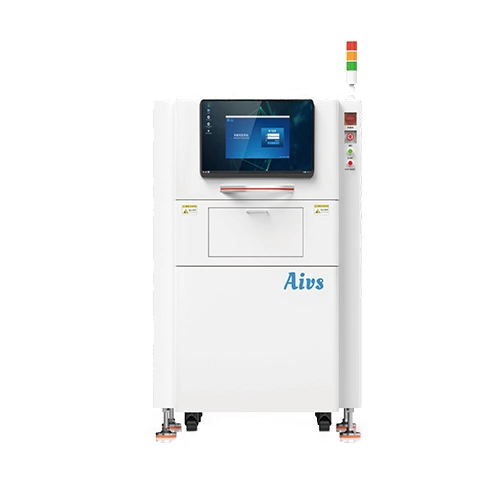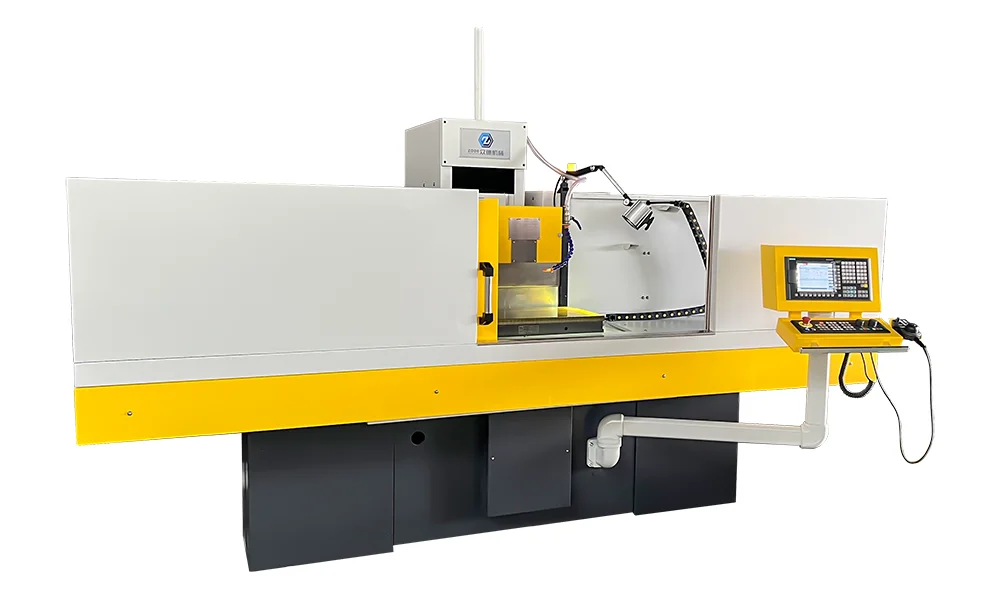In the modern era of manufacturing, quality control plays a crucial role in ensuring high product standards and reducing defects. Among the various inspection technologies available, the 2D Automatic Optical Inspection (AOI) system stands out as a reliable and efficient solution for detecting defects in different industries. In this blog post, AlVS will share the various applications of 2D automatic optical inspection system for sale and their impact on improving production processes and quality assurance.
What is 2D Automatic Optical Inspection System?
A 2D Automatic Optical Inspection (AOI) system is an advanced machine vision technology used to inspect and analyze products for defects, inconsistencies, and deviations from set standards. It utilizes high-resolution cameras, lighting, and intelligent software algorithms to detect issues such as incorrect component placements, missing parts, soldering defects, and surface scratches. The system is widely used in industries such as electronics, automotive, pharmaceuticals, and packaging due to its high-speed inspection capabilities and accuracy.

Key Applications of 2D Automatic Optical Inspection System
1. Electronics Manufacturing
One of the most prominent applications of 2D AOI systems is in the electronics industry, particularly in the inspection of Printed Circuit Boards (PCBs). Given the complexity and miniaturization of electronic components, manual inspection is inefficient and prone to errors. 2D AOI systems help in:
- Detecting missing, misaligned, or incorrect components on PCBs.
- Identifying soldering defects such as insufficient or excess solder.
- Ensuring proper pad alignment and component orientation.
- Improving yield rates by reducing defective products in the assembly line.
2. Automotive Industry
The automotive sector relies on high precision and quality control to ensure vehicle safety and performance. 2D AOI systems are extensively used for:
- Inspecting circuit boards used in vehicle electronics, such as ECUs (Engine Control Units) and infotainment systems.
- Detecting defects in automotive lighting components, such as LED alignment and surface defects.
- Ensuring the correct placement of intricate components in instrument clusters and control panels.
- Validating the integrity of connectors, wiring harnesses, and sensor modules.
3. Semiconductor Industry
Semiconductors require extreme precision, and even the slightest defect can lead to malfunctioning devices. 2D AOI systems are used to:
- Inspect semiconductor wafers for surface irregularities.
- Detect packaging defects in IC (Integrated Circuit) chips.
- Ensure correct placement of micro-components in semiconductor assembly lines.
- Identify errors in micro soldering and bonding processes.
4. Medical Device Manufacturing
In the medical device industry, precision and quality are paramount, as any defect could compromise patient safety. 2D AOI systems are used to:
- Inspect medical PCBs used in imaging devices, monitoring systems, and diagnostic tools.
- Detect surface defects, cracks, or inconsistencies in medical implants and instruments.
- Ensure the accurate placement of components in medical devices like pacemakers and hearing aids.
- Verify label correctness and compliance for pharmaceutical packaging.
5. Aerospace Industry
The aerospace sector demands the highest levels of accuracy and reliability due to the safety-critical nature of its components. 2D AOI systems contribute by:
- Inspecting avionics PCBs used in aircraft communication and navigation systems.
- Detecting surface defects, scratches, and inconsistencies in aerospace components.
- Ensuring compliance with stringent quality standards for aerospace-grade materials.
- Identifying defects in control panels and electronic modules used in flight control systems.
6. Consumer Electronics
With the rapid advancement in consumer electronics, the demand for high-quality products has never been greater. 2D AOI systems help manufacturers by:
- Inspecting smartphones, tablets, and wearable devices for defects in displays and components.
- Detecting misaligned or missing parts in electronic gadgets.
- Ensuring quality control in LCD and LED panel manufacturing.
- Verifying button alignment and touch sensor functionality in consumer devices.
7. LED and Display Panel Inspection
As LED and display technology continues to evolve, ensuring pixel accuracy and alignment is crucial. 2D AOI systems play a key role in:
- Inspecting LED panels for dead pixels, brightness inconsistencies, and misalignment.
- Detecting defects in touch panels and interactive displays.
- Ensuring the correct placement of backlight components in LCD screens.
- Maintaining consistent quality in OLED and AMOLED screen production.
8. Food and Beverage Packaging
In the food and beverage industry, packaging integrity is vital to ensure product safety and shelf life. 2D AOI systems are used to:
- Verify label accuracy, including barcode readability and expiration dates.
- Detect packaging defects such as misaligned seals and incorrect prints.
- Ensure uniformity in bottle caps and closures.
- Inspect for contamination or foreign particles on packaged goods.
9. Pharmaceutical Industry
The pharmaceutical sector requires stringent quality control due to regulatory compliance requirements. 2D AOI systems help in:
- Inspecting blister packs, ampoules, and vials for defects.
- Verifying dosage accuracy in pill packaging.
- Checking for print errors on medicine labels and packaging.
- Ensuring the integrity of medical device assembly lines.
10. Metal and Plastic Component Inspection
Manufacturers of metal and plastic components rely on AOI systems for surface defect detection and dimensional accuracy. 2D AOI systems assist in:
- Identifying scratches, dents, and deformations in metal parts.
- Ensuring precision in plastic moldings and injection-molded parts.
- Verifying the correct placement of fasteners, screws, and rivets in mechanical assemblies.
- Detecting inconsistencies in coating and plating applications.
Benefits of 2D Automatic Optical Inspection System
The adoption of 2D AOI systems in various industries offers several advantages:
- High-Speed Inspection: Reduces inspection time and improves production efficiency.
- Accuracy and Consistency: Eliminates human error and ensures uniform quality control.
- Cost Savings: Reduces waste and rework by detecting defects early in the production process.
- Compliance with Standards: Ensures products meet industry regulations and quality requirements.
- Scalability: Easily integrates into automated production lines for high-volume manufacturing.
Conclusion
The 2D Automatic Optical Inspection system has revolutionized quality control across multiple industries by providing fast, accurate, and cost-effective defect detection. From electronics and automotive manufacturing to pharmaceuticals and food packaging, the system plays a crucial role in enhancing product reliability and production efficiency. As technology advances, the integration of artificial intelligence and machine learning in AOI systems will further improve their capabilities, making them an indispensable tool for modern manufacturing.
By adopting 2D AOI systems, industries can achieve superior quality assurance, minimize defects, and stay ahead in a competitive market. Investing in this technology is not just about reducing errors but about ensuring excellence in every product that reaches the consumer.
www.aivs-vision.com
AlVS

